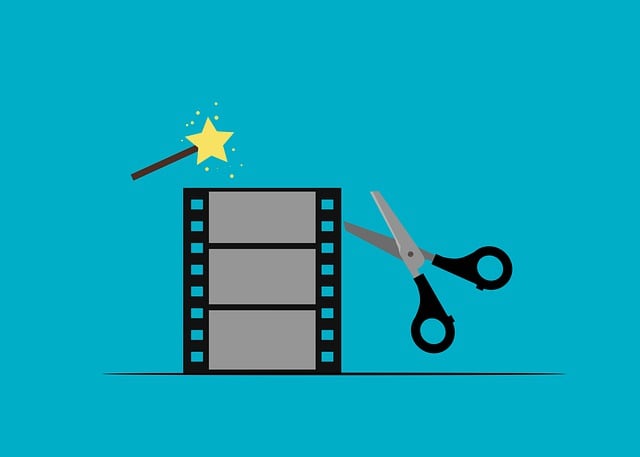divx Encoding (or DivX) is a video compression technology that significantly reduces file sizes while maintaining high visual quality through advanced algorithms like motion compensation and DCT. It offers various profiles for different user needs, from low-bandwidth options for mobile devices to high-quality settings for professional content creation. To leverage DivX's benefits, users should use compatible software like HandBrake or DivX products, optimize video settings based on intended use (e.g., bitrates, codec, resolution), and understand fundamentals for top-quality encoded videos.
Discover the power of DivX encoding, a revolutionary technology that compresses video files without sacrificing quality. This article delves into what is DivX encoding, exploring its comprehensive overview, unique compression methods, and remarkable benefits for high-quality videos at smaller file sizes. Learn how to get started with DivX, including essential tools and best practices.
Understanding DivX Encoding: A Comprehensive Overview

DivX Encoding, often simply referred to as DivX, is a video compression technology designed to deliver high-quality video content while significantly reducing file sizes. Unlike traditional video encoding methods, DivX leverages advanced algorithms and sophisticated techniques to strike a delicate balance between video quality and file size. This results in smaller files that retain excellent picture and sound quality, making them ideal for streaming, downloading, and storing on various devices.
At its core, DivX Encoding employs a combination of motion compensation, discrete cosine transform (DCT), and predictive coding to compress videos efficiently. These techniques allow DivX to identify and eliminate redundant or repetitive data within video frames, thereby reducing the overall file size without sacrificing visual fidelity. The technology also offers several profiles, ranging from low-bandwidth options suitable for mobile viewing to high-quality settings designed for professional content creation, catering to diverse user needs and ensuring optimal experience across different platforms and devices.
How Does DivX Compression Reduce File Size?

DivX compression, or DivX Encoding, is a video coding technology that significantly reduces file sizes while preserving high-quality video content. It achieves this by utilizing advanced algorithms to eliminate redundant data and compress information more efficiently than traditional methods. The process involves intricate mathematical techniques to analyze and encode each frame of the video, allowing for significant size reductions without notable quality loss.
By employing sophisticated compression strategies, DivX Encoding can strip out unnecessary data bits while retaining critical visual elements. This results in smaller file sizes, making video sharing and storage more manageable and cost-effective. It’s a game-changer for streaming services and content creators looking to deliver high-definition videos with minimal bandwidth requirements.
Benefits of Using DivX for High-Quality Videos

DivX encoding offers a game-changing solution for video enthusiasts and content creators alike, allowing them to enjoy high-quality videos while managing file sizes effectively. This advanced compression technology has revolutionized media consumption by delivering crisp visuals and immersive audio in smaller file formats. With DivX, users can compress videos without sacrificing significant quality, making it an ideal choice for streaming and sharing online.
By utilizing DivX encoding, viewers benefit from faster streaming times, reduced buffer delays, and improved overall video playback stability. The technology intelligently analyzes and compresses footage, preserving important details like fine textures and subtle color gradients. This ensures that videos maintain their original quality, making it a perfect choice for preserving the integrity of professional productions or personal memories.
Getting Started with DivX: Tools and Best Practices

Getting Started with DivX involves familiarizing yourself with a powerful video encoding format and the right tools to leverage its benefits. What is DivX Encoding? It’s a video compression technology known for delivering high-quality video while significantly reducing file sizes. This makes it ideal for streaming, sharing, and storing videos without sacrificing visual fidelity.
To get started, users should invest in suitable encoding software that supports DivX. Popular options include free tools like HandBrake and paid solutions from companies like DivX, Inc. Best practices involve optimizing video settings based on your content and intended use. For instance, lower bitrates are suitable for web streaming while higher rates ensure excellent quality for local playback or backup purposes. Additionally, understanding the fundamentals of video encoding, such as codec selection, bitrate allocation, and resolution adjustments, will help users achieve the best possible DivX-encoded results.
DivX Encoding, a powerful video compression technology, offers an exceptional balance between quality and file size. By understanding how it works, you can significantly enhance your video content while keeping file sizes manageable. This article has provided an in-depth look at DivX’s capabilities, from its encoding methods to the benefits it brings. With the right tools and best practices, as outlined here, you’re now equipped to create and share high-quality videos with smaller files, making media distribution more efficient and accessible.
